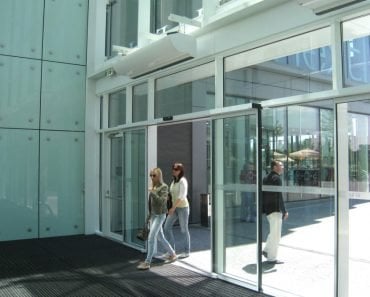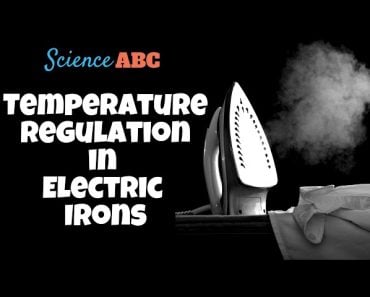Table of Contents (click to expand)
An air conditioner works by absorbing warm indoor air and cooling it through a set of coils known as an evaporator. The cooled air is then circulated back into the room. This extraction of heat from the room ultimately provides a comfortable and cool indoor environment during hot weather.
Imagine being outside in the sweltering heat of a particularly hot summer day, doing godforsaken errands that can no longer be postponed. The heat is so unbearable that it feels like the hottest day on Earth since the dawn of civilization. But one thing keeps you on your toes: knowing you will be in your air-conditioned house in an hour.
The time has finally come: you open the door and enter your house. A gust of cooled air envelops every cell of your body, and you immediately feel better.

I am sure that you have all had this experience at least once in your life: the “cooling revolution” that air conditioners have brought into human society can never be discounted; though previous generations had fans and other ways to keep cool on hot days, they have never been as astonishingly effective as modern air conditioners in terms of sheer cooling capacity.
In this article we will talk about air conditioners and what they do – and how they do it – which makes them almost a necessity in urban areas.
Recommended Video for you:
How Does An Air Conditioner Work?
An air conditioner operates akin to a pump, extracting heat from a room and expelling it outdoors. This process involves a mechanism with refrigerant gas, heat exchanger coils, and a compressor. The functioning of air conditioning units is rooted in a fundamental principle of physics—the absorption of heat when a liquid transforms into a gas. In essence, air conditioners transfer heat from the interior of a room to the exterior. Let’s delve into the workings of this intricate machinery that ensures your comfort.
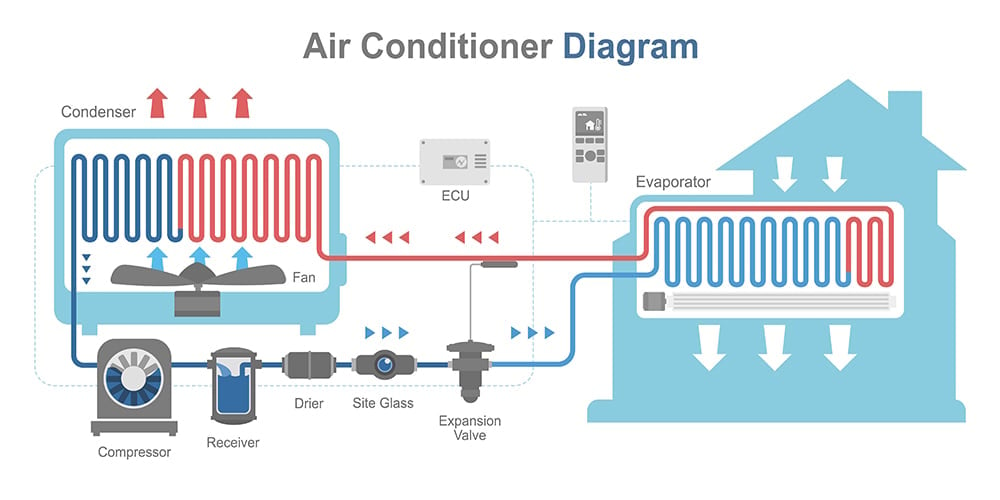
Key Components Of An Air Conditioner
Refrigerant
The refrigerant is the most important component of an air conditioner. It is the gas that moves through the heat exchanger coils of the unit, absorbing heat within a room and expelling it outside. The refrigerant circulates within the air conditioner in a cycle of evaporation and condensation, contributing to the reduction of the air temperature inside a room. The most commonly used refrigerants include HCFCs (hydrochlorofluorocarbons) like R-22, HFCs (hydrofluorocarbons) such as R410A & R32, and HCs (hydrocarbons) like R290.
Evaporator
An evaporator is essentially a heat exchanger coil responsible for gathering heat from the interior of a room through the use of refrigerating gas. This component is named an evaporator because it’s where the liquid refrigerant absorbs heat (from the room) and transforms into a gas. Typically constructed from copper or aluminum, these metals are chosen for their excellent heat conduction properties. The evaporator features copper/aluminum tubes through which the refrigerant flows, along with fins connected to the tubes to enhance heat transfer between the refrigerant and the outside air.
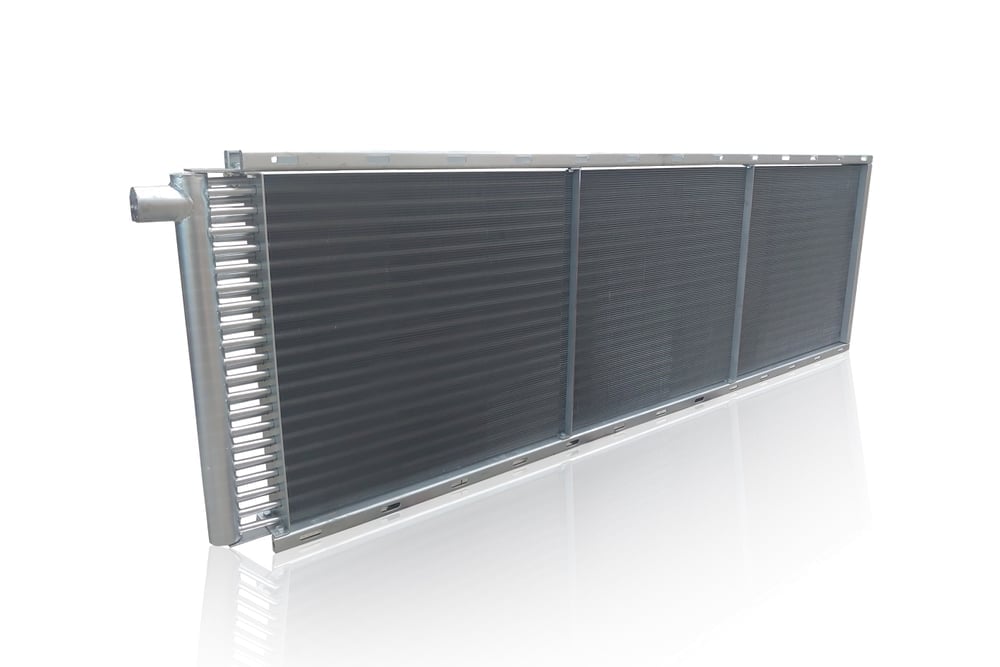
Compressor
As the name implies, this component compresses the refrigerant gas into a high-pressure and high-temperature state. The compressor functions as a pump, taking refrigerant gas from the evaporator (or the unit inside the room), compressing it to elevate both pressure and temperature, and subsequently transferring the high-pressure/high-temperature gas to the condenser located outside the room.
Condenser
A condenser is another heat exchanger, situated outside the room. It earns its name by being the site where hot gas undergoes condensation into a liquid. When the high-pressure/high-temperature gas reaches the condenser, a fan blows ambient air over the heat exchanger, cooling the refrigerant gas and transforming it into a liquid. This procedure enables the refrigerant to release the heat it absorbed from the room. Similar to evaporators in construction, condensers are typically made of copper or aluminum. However, they are housed in a unit outside the room.
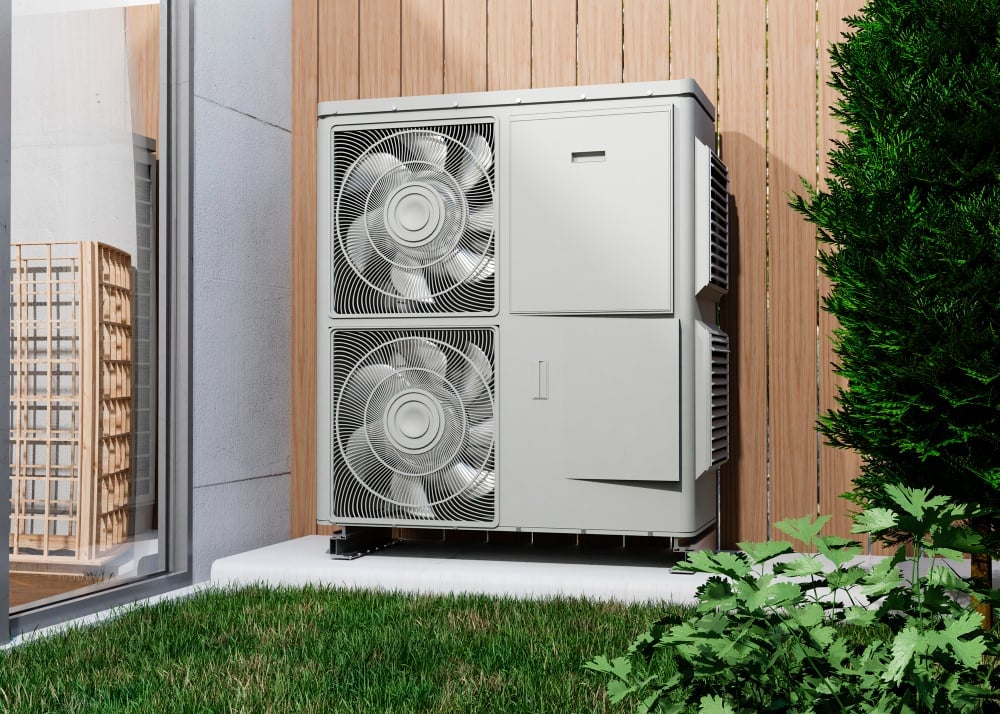
Expansion Valve
An essential component of air conditioning units, an expansion valve is positioned between a condenser and evaporator. It regulates the quantity of refrigerant flowing toward the evaporator. The expansion valve converts high-pressure liquid refrigerant from the condenser into low-pressure/low-temperature liquid. Subsequently, this low-pressure/low-temperature liquid is directed to the evaporator, where the cycle continues.
These are the main components of an air conditioner. Let’s look at how they work together to make an air conditioner do what it does.
AC: Operating Principle Of The Air Conditioner
To sum up, here is a 4 step process by with an air conditioner works:
- The refrigerant begins as a low pressure/low temperature liquid in the evaporator coil inside the house. Here, it absorbs heat from the indoor air. This cooled air is then circulated throughout the house. Meanwhile, the refrigerant turns from a liquid to low pressure gas as it absorbs heat.
- This gas is then transported to the unit located outside the house. Here, a compressor is used to transform this gas refrigerant to high pressure and high temperature.
- It is then moved to the condensation coil where the heat previously absorbed from your home is released into the outside air. A fan blows air over the condenser, cooling and converting the refrigerant back into a high pressure liquid.
- The refrigerant is then moved back into the home (indoor unit) through the expansion valve, beginning the cycle anew. The heat from inside your house is thus transferred outside, cooling the interior of your home.
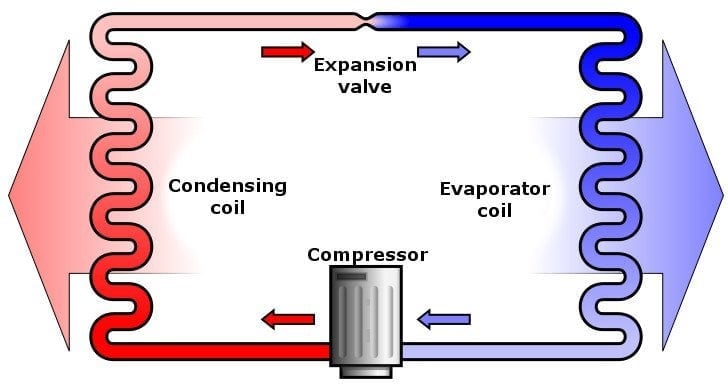
Debunking The Myth
Many people believe that an air conditioner, with the help of machines installed in it, generates cooled air, which can cool a room so quickly. This might also explain why it consumes so much electricity. In reality, however, this is a mistake. An air conditioner is not a magical device; it does not generate cooled air. It only uses some physical and chemical phenomena very effectively to move heat from the room to outside.
What Happens When You Turn On The Air Conditioning?
When you turn on an air conditioner and set the desired temperature, say 20 degrees Celsius, the thermostat installed in it will detect that there is a difference between the temperature of the room air and the temperature you have chosen.
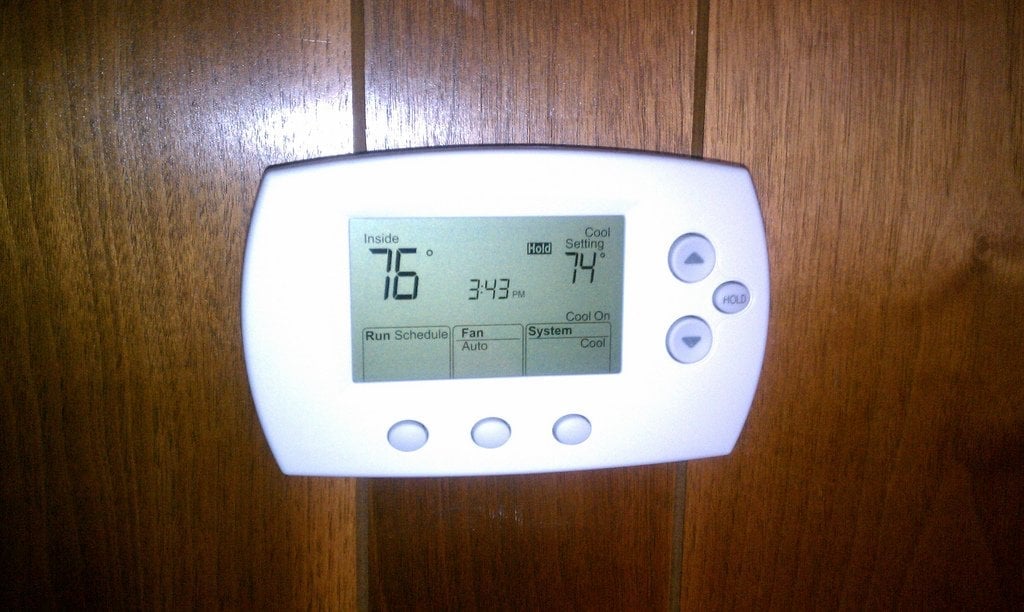
The whole process (explained above) repeats itself again and again until the desired temperature is reached. In short, an air conditioner sucks in warm air, again and again, cools it and pushes it back into the room until there is no warm air left to cool down.
As dependent as we may be on air conditioning, it is surprising that it was not originally designed for human comfort. The motivation for the first modern air conditioning system was to eliminate certain problems in a publisher’s production processes! To believe that a machine that was supposed to support the publication of newspapers on a large scale could one day become an integral part of every modern household is something, isn’t it?





